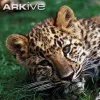Take a look inside 5 images
ARKive
Pros: Resources are polished, engaging, and include the necessary support materials.
Cons: Some games lack baked-in learning, and resources could use more support for diverse learners.
Bottom Line: Powerful images and videos capture kids' attention and make them want to learn more.
Lesson ideas range from presentations teachers can show to the whole class to games and projects for small groups. For example, the "Invasive Species" lesson provides a PowerPoint presentation followed by individual case study research that requires students to use the images and resources on the site. Some activities are individual, like "Handling Data: African Animal Maths," where kids use a worksheet to convert units and produce graphs from animal data. Games like "Egg and Spawn Race" are best used as an extra activity for kids who finish their work early.
ARKive is a digital library that contains more than 100,000 high-quality videos and photographs of the world's animals, plants, and fungi. Gripping videos, photographs, and information catalog 15,000 of the world's endangered species. A Fun section includes learning games and activities related to conservation and other related topics. Teachers can find classroom resources organized into age categories for kids 5-18 years old with most materials in the 7-11 and 11-14 age groups. The ARKive lesson plans provide opportunities for kids to look more closely at the site's resources and inspire them to protect living things. Topics focus on biodiversity, human impact, and evolution.
Standout Lessons, Games, and Activities
"Superb bird of paradise courtship dance" -- Watch an up-close video of birds courting.
"Team Wild" -- Play a game where you act as a superhero and save the environment.
Design a Conservation Programme Lesson -- Design a conservation program and weigh its costs and benefits.
The classroom materials are visually appealing and professional-looking. They are the PowerPoint slides and worksheets you would make yourself if only you had enough time. For example, in the "Web of Life" presentations, kids are given time to reflect on what the word carnivore means with a vivid picture of a cheetah eating an antelope. After they access their prior knowledge, they get a definition for the term.
The ARKive games may be fun for kids, but they aren't as centered on learning as the lesson plans. In games like "Team Wild," kids may learn nuggets of info about captive breeding programs, for example, but the game itself is simply based on eye-hand coordination. Also, it would be nice if the games, quizzes, and activities had audio support and other accessibility options for diverse learners.












